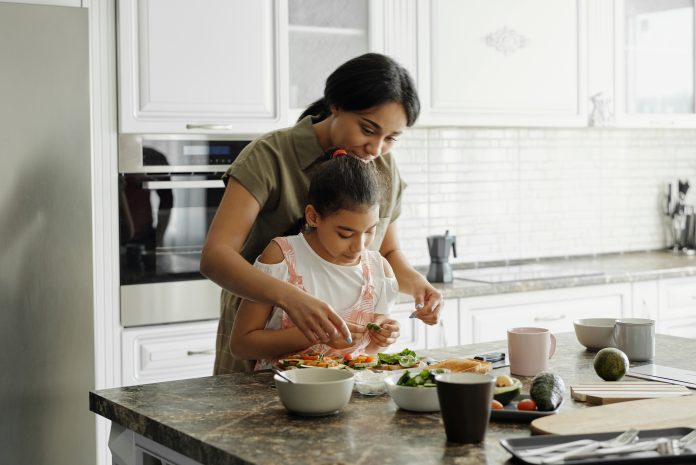Some schools are implementing a no waste lunch policy in order to reduce waste, save parents money and encourage children to eat healthier.
This can be a difficult and frustrating step for parents who are used to sending prepackaged food for their children. After all, prepackaged food is convenient (particularly when both parents work) and it stays fresh longer, so parents are confident that the risk of food poisoning is lower. The main downfalls of prepackaged food is that it costs more and produces more waste.
Prepackaged Food Contains Additives
In addition to cost and waste, prepackaged food stuffs often contain additional food additives which may be harmful to kids. Additives such as artificial preservatives, colours and flavours enhance the attractiveness and freshness of the food stuffs but can also affect behaviour and long term health. While these chemicals may fall within industry standards for that particular product, little research has been done on the ingestion of several products containing similar or a variety of food additives.
How Much of a Gourmet Buffet Do Kids Really Need
At the end of the day, parents need to question, just how much elaborate food do kids really need? Generation Xers and baby boomers will remember that as children, the typical lunch box contained a drink bottle of water, home baked sweet and fruit for morning tea and sandwiches and for lunch. The amount of waste produced from such a lunch packaged in re-washable containers is almost nil, depending on what fruit is given. Most kids back then would never have returned home with uneaten lunch because there were very strict rules on when the next meal would be served.
These days Generation Y and Z children typically carry a wide variety of prepackaged single serve food stuffs like cereal bars, dried fruit, yoghurt, biscuits, tinned fruit snacks, chips, fruit derivative “roll up” sweet snacks, poppers and maybe a real apple or a sandwich. Most of it is opened and rarely is all of any treat fully eaten. Waste from each lunch box includes a bit of every type of snack available in the lunch box, in addition to the wrapper it was packaged in! How much money is being wasted and how much environment has to suffer?
Waste in the School Grounds Plus Money Wasted
It is no wonder the teachers and principals cringe when they look at the grounds around the schools and impose such an apparent harsh rule in the twenty first century, but this issue needs to be addressed somewhere in the community. Education starts in the schools. Children are taught about what sort of rubbish can go into which bin right from kindergarten. It is an essential life skill. Yet ironically, Generation X parents who have fought so hard for environmental change, keep adding to the non-recyclable waste by continuing to flood lunch boxes with a smorgasboard of unappreciated snacks.
It’s time to get back to basics and simplify those lunches. After all, the kids are really only at school for six hours in the day. They wont starve in that time! It’s quite amazing how much money can be saved and the children will be better off with less to choose from in the long run.
Say No to Plastic Bags in School Lunchboxes
When packing school lunchboxes, it’s easy to grab a handful of resealable plastic bags and start filling them with sandwiches and snacks. Using small plastic bags helps parents pack smaller portions and cut lunch costs by buying snacks in bulk and repackaging them. But all those plastic bags can add up to high costs and are not an environmentally-friendly choice since it is difficult to recycle the bags. Parents who want to say no to plastic bags can try sandwich wrappers, storage containers and a milk craft that creates a reusable sandwich container.
Environmentally Friendly Choices for Lunchboxes
Sandwich wrappers are a new option for parents who want to make environmentally friendly choices for their kids’ school lunchboxes. Options like the Wrap-n-Mat® sell for $7.50 and up. Wrap-n-Mats can be purchased online and at some retail stores.
A sandwich wrapper is made from polyethylene vinyl acetate and can be wiped clean after use. To pack an environmentally friendly school lunch, use a sandwich wrapper instead of a Ziploc plastic bag. Add a whole piece of fruit, which is a high-fiber, low-cost and healthy kids’ food with no packaging. Choose an individual package of snacks with a recyclable wrapper and a recyclable juice drink pouch to create a healthy and waste-free lunch. Wrap-n-Mat also sells pouches to hold dry snacks.
Sandwich Storage Without Ziploc Plastic Bags
Sandwich wrappers are useful to eliminate the need for plastic sandwich bags, but they do not work well for parents who want to repackage bulk snacks into lunch-size portions to cut lunch costs. Moms and dads can buy reusable plastic containers of all different sizes for this task. Items like Gladware and Rubbermaid plastic containers come in many useful sizes and can hold dry and wet food. Some are divided to hold sandwiches and snacks together in one storage container.
In certain areas, these plastic containers are recyclable so they can be an environmentally friendly choice. Storage containers for most lunch items can be quickly hand-washed, used for other food items and will last all year.
Milk Jug Craft Makes a Reusable Sandwich Container
Parents who want to make their own reusable snack or sandwich container can create lunch containers out of empty, plastic half-gallon and gallon milk jugs. This milk jug craft uses few supplies and teaches children to reduce, reuse and recycle. Gallon-size plastic milk jugs can be cut to make a sandwich storage container that is the perfect size for a sandwich and some chips.
The sandwich will not get crushed in a school lunchbox. The half-gallon milk jugs make smaller storage containers. These are good for cut up vegetables and fruit or other dry snacks. Kids can decorate the homemade, sandwich containers with markers and the containers can be recycled when children are done using them.
Parents who want to cut costs by buying fewer resealable plastic bags have several options. They can purchase reusable sandwich wrappers and snack pouches. Buying plastic containers in different sizes can reduce waste as the containers will last for a full school year, can be used in the home and may be recycled in some areas. Making a reusable sandwich container from a milk jug is a cheap way to teach kids to reduce, reuse and recycle. To learn how to earn money for schools through recycling, read “Start a School Recycling Program for Juice Boxes.”





